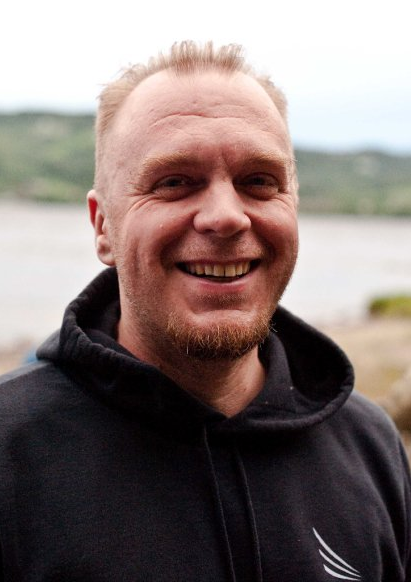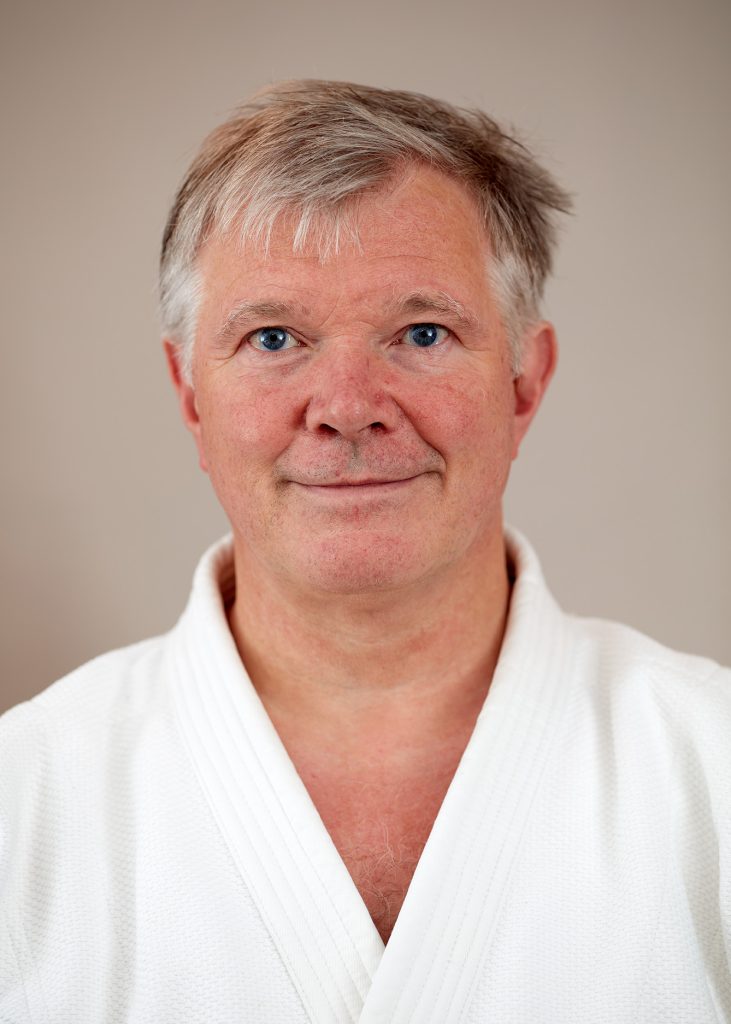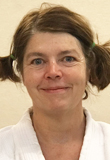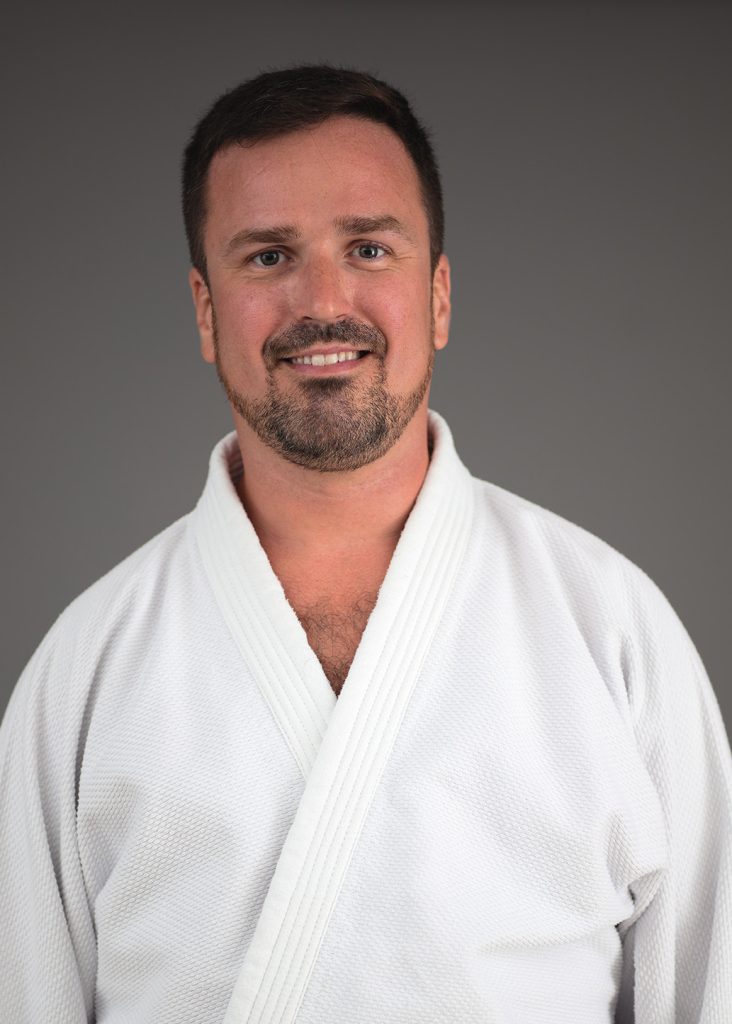
Practice aikido
Practicing aikido provides well-being both physically and mentally. Through aikido, we train our fitness, concentration, softness, strength, balance.
What is aikido?
Aikido is a Japanese martial art that Morihei Ueshiba developed in the early 20th century. He had trained in several of the traditional Japanese martial arts but was dissatisfied as fighting always led to new battles. He sought a budo without winners or losers.
The word aikido is a combination of three Japanese characters; Ai stands for harmony and cooperation, Ki stands for power and energy, while Do stands for the path or rather the practice of the path. Aikido could therefore be loosely translated as "of the path of harmonious power".
Aikido is designed as a kind of self-defense where you never encounter force against force. Instead, we use the strength of the attack to lead the attack into a movement that becomes a throw or a hold.
However, many people practice aikido for reasons other than self-defense. Aikido training makes you feel good both physically and mentally. Through aikido, we train our fitness, concentration, softness, strength, balance. We do coordination exercises and breathing exercises and learn to fall in different ways.
In aikido we do not compete. Instead, we develop together and everyone trains according to their own abilities. Those who want to train hard can do it, those who want to train easier can do it. Men and women, young and old train together. The children's groups are separate.
Today, aikido is found all over the world in most countries. In Sweden alone, there are approximately 4,500 practitioners.
The best way to know if you like aikido is to try it yourself. Do it with us!
Vanadis Aikido Club - a short presentation.
Vanadis Aikido is a non-profit association that conducts adult, child and youth training in aikido. The association was formed in the spring of 1994. Since then it has operated at the same address, centrally at Odenplan at Västmannagatan 59 in Stockholm. The premises underwent an extensive renovation (2020-2022).
Vanadis Aikido offers regularly children's training (7-15 years), beginner training and more advanced training for adults a total of 6 days a week as well as weekend camps at regular intervals.
The club is a member of Swedish Aikido Association and thus i National Sports Confederation, which means, among other things, that all members are automatically insured through their membership fee. The club is also involved Stockholm's Budo Federation. Internationally, Vanadis follows the direction of Aikikai and is a member of International Aikido Federation, IAF.
We have many highly rated instructors. Several of them regularly teach around Sweden, the rest of Europe and even the USA.
Welcome to practice aikido with us!
Our instructors

What is important to you as an instructor?
- Oh, it's a bit difficult to include everything, but some important things are that it should be fun and everyone should have learned/found something new, which will take them further. You must also not forget that it is budo we are doing, so it is also quite serious. Since we have different roles in the training, uke and tori, you have to step into your role, otherwise it becomes pointless. It's real, but pretend, and a lot of fun.

What is important to you as an instructor?
- I want the pass to be both physical and technical. I want to create a positive atmosphere and I am happy to be involved as both tori and uke during the sessions. What is important to me is changing, a few years ago high falls were the most important thing, but now I work a lot with the interaction between tori and uke.

What is important to you as an instructor?
- I would like to achieve a mixture of basic execution and a little more flow in the techniques and to pick up the pace so that the trainees get a little tired. But I also think it's important to come to other people's sessions and train myself, meet those I instruct as a regular training partner. It's an important way to show that I too do aikido because it's fun.

What is important to you as an instructor?
- Feeling joy and enthusiasm that I can spread to the other practitioners is important to me. No talking and lots of movement on the mat, as aikido is all about energy. Each lesson is not just a lesson, but for me a discovery of new elements. As Joseph Beuys, a German artist, said: "It is through my students' questions that I myself develop as an artist." I have the same experience when I teach aikido.

What is important to you as an instructor?
- I try to give those who train a lot of time to test and explore for themselves, both so that everyone gets a chance to practice and experiment with the movements, but also so that I can learn from those who are there. When each technique is allowed to take some time, something often happens to the dynamic, and more people have time to get to know their training partner and make the techniques their own together.

What is important to you as an instructor?
- Our training opens the door for a higher attention to what happens in the body and in the mind. This increased level is available when we meet people outside the dojo. In this way, we spread seeds of peace among those we come into contact with on our way.
All that is needed from the instructor is to create space for everyone to feel good, feel included, and become curious. Aikido makes people happy!

Started training in the Uppsala YMCA Budohuset in autumn 1996 but stopped in 1997 due to an injury. However, Aikidon lived on in heart and mind and in 2005 he started training again, this time at Vanadis. Lived a more violent life in the 90s in American football but is now guided on the paths of Aikidon by Jorma and Janne.

Ingela started training aikido in connection with the club's family camp in Orust in 2006. She soon became attached to aikido's fine combination of heart, brain and body. Aikidon has the joy and movement of dance but also requires a sense of technique and the ability to use the power in the right way. The most important thing now is to achieve a sustainable aikido, so that you can practice aikido well into old age.

- What is important to you as an instructor?
As a children's trainer, I try to convey the wonderfulness of aikido and inspire the children to train further. For me, aikido is also an inspiration in life outside the dojo, and I would like the children to take with them skills that are useful in everyday life, regardless of whether they continue to practice or not. And last but not least: it should be fun!





